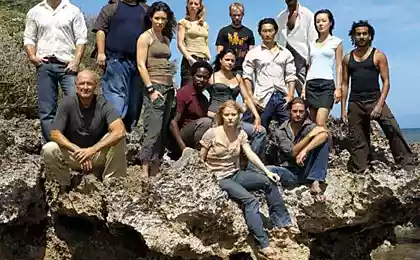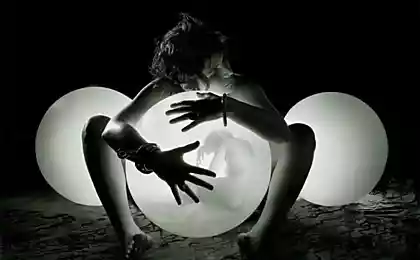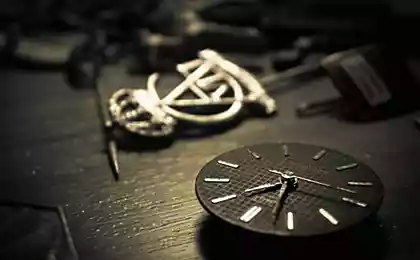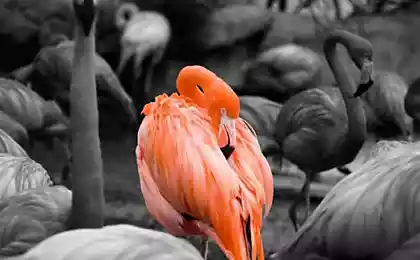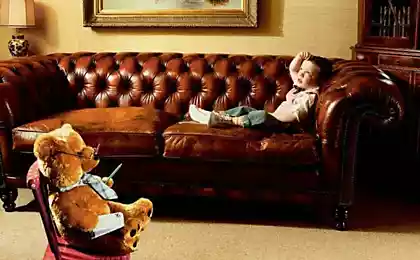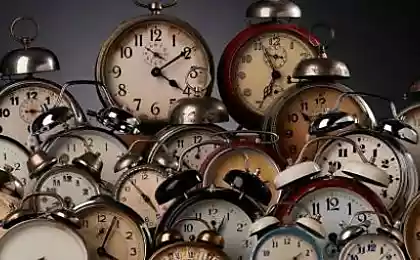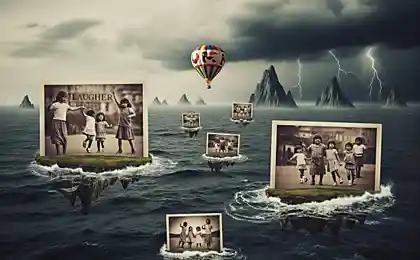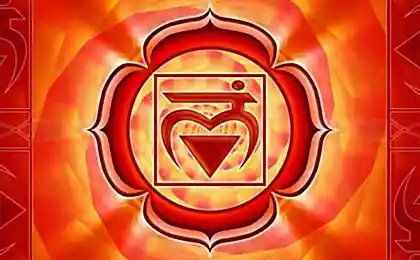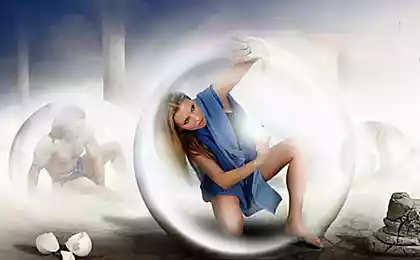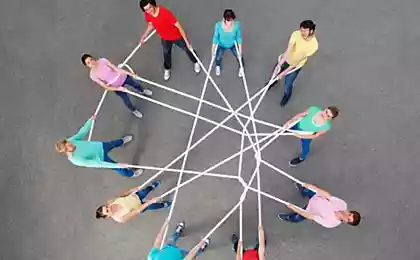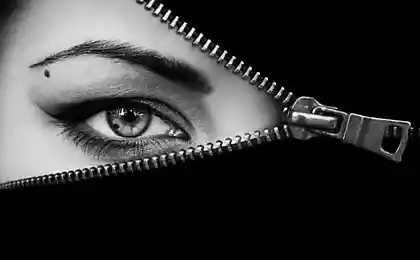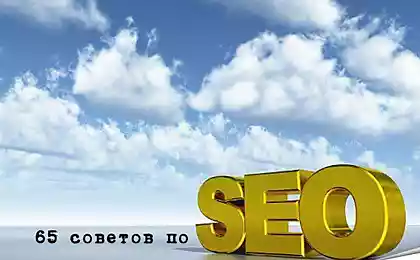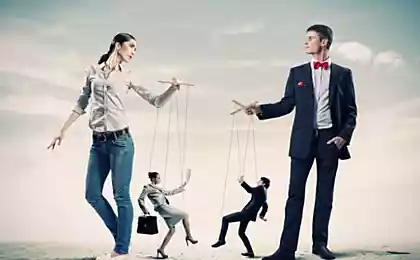528
The experiments with time: Your choice can change yesterday's events
Our present choice or decision can change the events.This statement sounds not very believable, but only because we didn't try. The influence of the present on the past said the physicist John Wheeler, repeating in 1983 the famous experiment by Taylor double slit, multiple modifying it.

The essence of experiment consisted in the fact that the photon passed through the barrier using one or two small holes. With one open hole, the particle behaved predictably and kept ending up in the same way as started, in the form of particles.
But when opened the two holes, it passed through both holes at the same time, that is, acting as an energy wave. It turned out that the photon somehow "knew" when you are in a hole, and when two. The only explanation for this could be that observing the experiment, the scientists knew about the number of open holes and this affected the result.
Experiment Wheeler had one moment. The observation was started only after the photon had passed through the barrier, but before he reached the goal. As the target used lens, which allowed to determine the photon as a particle and the screen, which recorded the photon as a wave. In the experiment of Taylor photons acted in accordance with the expectations of observers, depending on the mode of observation — that is, they were particles when they were monitored, and the waves, when it was expected that they will behave like waves.
In Wheeler's experiment worked like this: if the observer chose that the photon — particle the aim of the photon became lens and it passed through one hole; if the observer wanted to see the photon as a wave, his goal was a screen and he ran through two holes like a wave. This observer made the decision after the start of the experiment in the present, nevertheless it is determined by the behavior of a photon in the beginning of the experiment, that is in the past.
John Wheeler showed that the observer can select the properties involved in the event object after the event happened." This experiment was named experiment with delayed choice.
Helmut Schmidt, a German physicist, interested in the relationship between the observer and the observed phenomenon, found that the observer is capable of its intention to influence random events that occurred in the past.
Schmidt connected the random number generator to audio sources via, which is reproduced in the right-click in the left speaker. He made a large number of these records (the records were made so that no one, including the Schmidt did not know the result).
The next day, these tapes were distributed to the volunteers and offered to mentally affect the result and try to make some of headphones was distributed more clicks than the other.
Schmidt compared the number of clicks in different speakers on the tapes, which were exposed to mental influence by the number of clicks on the control records that effect was not made.
The control recording showed a completely normal, random, unordered result. Analysis of another group of records showed that participants were able to affect the number of clicks in the recordings made two days ago.
Professor Leonard Life, trying to prove the impossibility of the application of scientific methods in the study of prayer and alternative medicine, conducted an experiment with 3393 participants patients with sepsis.
Used double blind and neither the hospital staff nor the scientist himself did not know, for whom the sick pray, and for whom not. The results showed that in the group of those who prayed, there was an insignificant decrease in mortality from 30% to 28%) and less had to be in hospital, they felt better, and a high body temperature is held for less time. But that's not it. Patients were in the hospital in the time period from 1990 to 1996, and prayed for them in 2000.
Myself my Life was puzzled by the findings, and wrote that “statistics crazy”.
The results were published in the “British medical journal” in 2001 and caused a strong reaction among supporters and opponents of the hypothesis that it is possible to influence past events. published
P. S. And remember, only by changing their consumption — together we change the world! ©
Source: www.quantumcristal.com/eksperimenty-s-vremenem/

The essence of experiment consisted in the fact that the photon passed through the barrier using one or two small holes. With one open hole, the particle behaved predictably and kept ending up in the same way as started, in the form of particles.
But when opened the two holes, it passed through both holes at the same time, that is, acting as an energy wave. It turned out that the photon somehow "knew" when you are in a hole, and when two. The only explanation for this could be that observing the experiment, the scientists knew about the number of open holes and this affected the result.
Experiment Wheeler had one moment. The observation was started only after the photon had passed through the barrier, but before he reached the goal. As the target used lens, which allowed to determine the photon as a particle and the screen, which recorded the photon as a wave. In the experiment of Taylor photons acted in accordance with the expectations of observers, depending on the mode of observation — that is, they were particles when they were monitored, and the waves, when it was expected that they will behave like waves.
In Wheeler's experiment worked like this: if the observer chose that the photon — particle the aim of the photon became lens and it passed through one hole; if the observer wanted to see the photon as a wave, his goal was a screen and he ran through two holes like a wave. This observer made the decision after the start of the experiment in the present, nevertheless it is determined by the behavior of a photon in the beginning of the experiment, that is in the past.
John Wheeler showed that the observer can select the properties involved in the event object after the event happened." This experiment was named experiment with delayed choice.
Helmut Schmidt, a German physicist, interested in the relationship between the observer and the observed phenomenon, found that the observer is capable of its intention to influence random events that occurred in the past.
Schmidt connected the random number generator to audio sources via, which is reproduced in the right-click in the left speaker. He made a large number of these records (the records were made so that no one, including the Schmidt did not know the result).
The next day, these tapes were distributed to the volunteers and offered to mentally affect the result and try to make some of headphones was distributed more clicks than the other.
Schmidt compared the number of clicks in different speakers on the tapes, which were exposed to mental influence by the number of clicks on the control records that effect was not made.
The control recording showed a completely normal, random, unordered result. Analysis of another group of records showed that participants were able to affect the number of clicks in the recordings made two days ago.
Professor Leonard Life, trying to prove the impossibility of the application of scientific methods in the study of prayer and alternative medicine, conducted an experiment with 3393 participants patients with sepsis.
Used double blind and neither the hospital staff nor the scientist himself did not know, for whom the sick pray, and for whom not. The results showed that in the group of those who prayed, there was an insignificant decrease in mortality from 30% to 28%) and less had to be in hospital, they felt better, and a high body temperature is held for less time. But that's not it. Patients were in the hospital in the time period from 1990 to 1996, and prayed for them in 2000.
Myself my Life was puzzled by the findings, and wrote that “statistics crazy”.
The results were published in the “British medical journal” in 2001 and caused a strong reaction among supporters and opponents of the hypothesis that it is possible to influence past events. published
P. S. And remember, only by changing their consumption — together we change the world! ©
Source: www.quantumcristal.com/eksperimenty-s-vremenem/
